Jazzellerault Festival Embraces Immersive Audio as Visiting Engineers Master L-ISA Technology Jazzellerault Festival Embraces Immersive Audio as Visiting Engineers Master L-I...
The 32nd edition of the festival is deploying a spatial audio system and offering front-of-house sound engineers the opportunity to try out spatial mixing, particularly for jazz, funk and soul performances.
CHÂTELLERAULT, France – July 2025 – The 32nd edition of Jazzellerault Festival has taken an innovative approach to immersive audio technology, combining L-ISA deployment with comprehensive education for visiting engineers. As celebrated acts like Imagination featuring Leee John, Avishaï Cohen Trio, and Richard Galliano performed at the L’Angelarde venue, their FOH engineers were learning the nuances of spatial sound mixing with L-ISA Immersive Hyperreal Sound technology.
The thoughtful collaboration between Scène de Nuit – NT Event, L-Acoustics Certified Provider, and the festival’s diverse roster of international sound engineers transformed the technical implementation into a valuable learning experience. Each of the six visiting engineers—many encountering L-ISA for the first time—received personalized guidance in spatial mixing techniques, expanding their professional toolkit for future projects.
“We realised we had an incredible opportunity,” explains Lucas Vaillant of Scène de Nuit. “These FOH engineers working with internationals artists, but most had never mixed in immersive audio. Jazzellerault offered a learning environment where they could explore spatial mixing with the sophistication that jazz, funk, and soul demand.”
The festival’s unique format—featuring one artist per day across six days—provided ample time for system calibration and engineer consultation, turning each performance into a bespoke sonic experience.
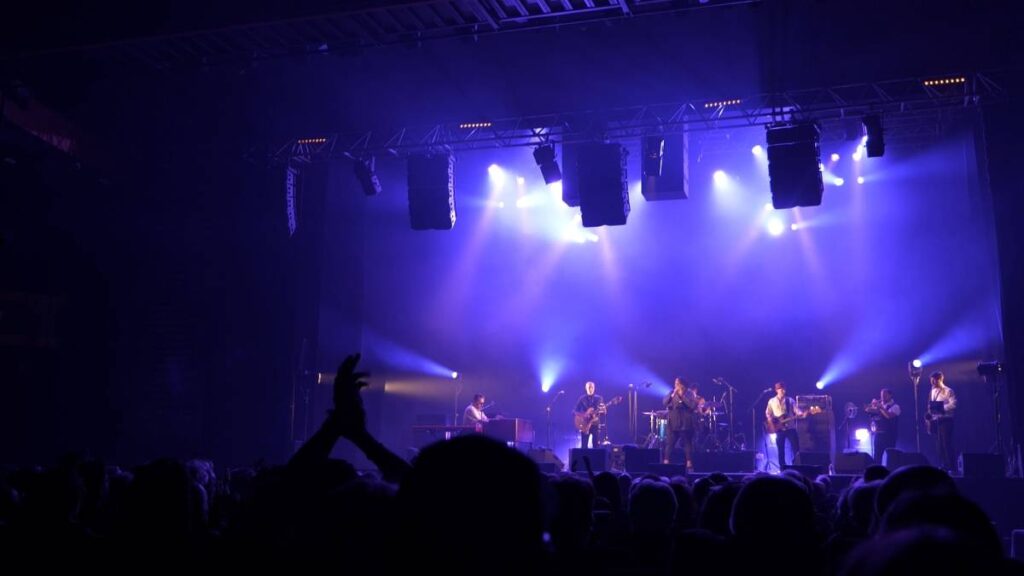
Overcoming venue constraints with innovative system design
Despite its intimacy, the L’Angelarde venue posed several technical challenges. A low central catwalk and a front truss height limited to 6.8 meters required inventive system engineering. “The most significant constraint was the clearance under the front truss,” says Vaillant. “To maintain optimal sightlines and ensure safe rigging loads, we limited the main arrays to five speakers per hang.”
Using L-Acoustics Soundvision software, Vaillant mapped out the space, accounting for the venue’s structural elements while predicting audience coverage and visual impact. “Soundvision allowed us to design within real-world parameters,” he adds. “We could model the catwalk and truss heights and simulate how the loudspeaker system would behave before installation.”
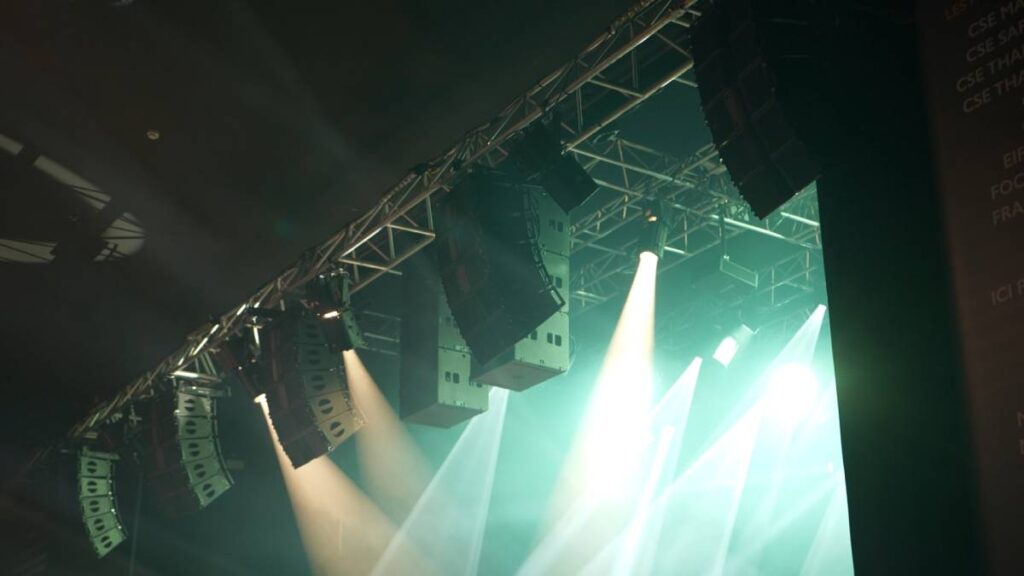
Tailored L-ISA deployment for intimate immersion
Scène de Nuit deployed a frontal L-ISA configuration comprising five flown arrays of five Kara II per hang. Two centrally flown sub arrays each featured three KS21 subwoofers in cardioid mode, offering a sufficient level of low-frequency while reducing stage bleed. Front-fill coverage was handled by six A10 Wide speakers in downmix mono, ensuring intelligibility for nearfield listeners without compromising the immersive image for the wider audience.
The digital audio architecture integrated a Dante-based FOH mix with MADI input to the L-ISA Processor II via Auvitran Audio ToolBox conversion. The processor then distributed Milan-AVB to ten LA12X and one LA4X amplified controllers for full-system power and control.
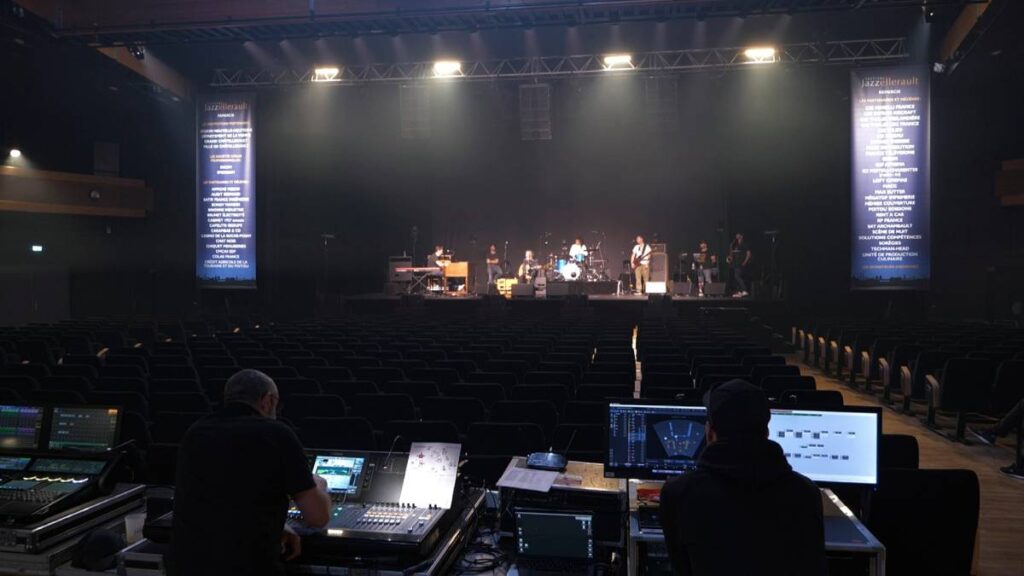
Collaborative integration across production disciplines
Early collaboration between Scène de Nuit and the lighting team ensured the L-ISA configuration could be integrated without compromising other production elements. The presence of a centrally rigged video projector, for instance, influenced subwoofer placement. “As soon as we proposed L-ISA, I contacted the lighting designer to coordinate rigging and sightline requirements,” says Vaillant. “This kind of teamwork was key to ensuring the whole system came together harmoniously.”
Scène de Nuit also consulted L-Acoustics touring application engineers during design, particularly around sub placement and preset configuration to maximise cardioid performance and reduce stage spill.
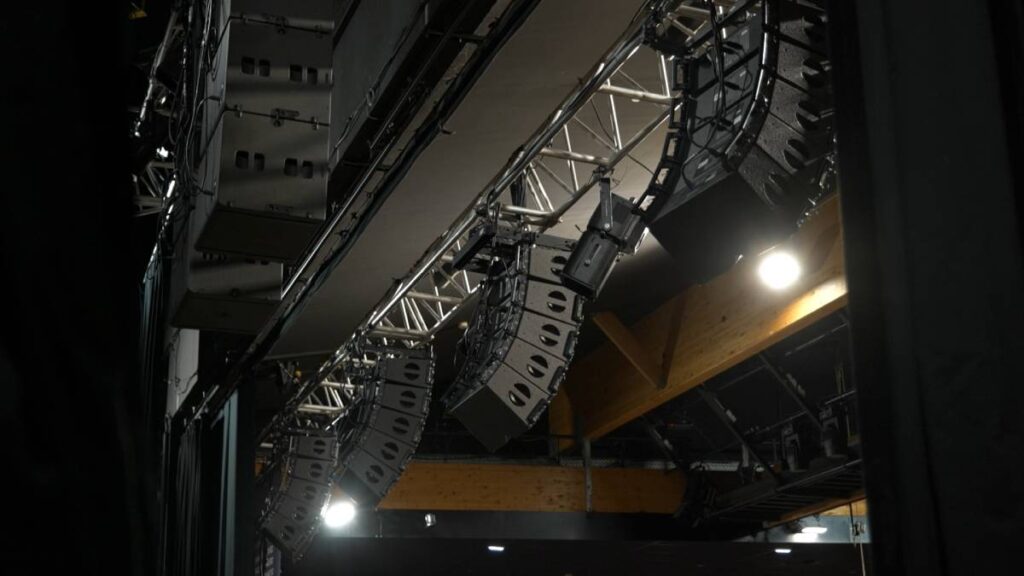
Supporting FOH Engineers through the spatial audio transition
The festival welcomed a diverse roster of FOH engineers, many encountering the object-based mix for the first time. One of them tried the Stereo mapper feature and placed some objects inside. Scène de Nuit reached out to each engineer in advance to offer guidance and address any concerns about spatial mixing. “Some were hesitant, others curious,” says Vaillant. “But every one of them walked away impressed by how L-ISA reduces masking and improves instrument separation. It allowed them to rethink their approach to mix balance and compression.”
Engineers noted how L-ISA enhanced definition across complex arrangements—particularly valuable for genres where subtle phrasing and tonal nuances are essential. The experience also offered a valuable learning curve, expanding engineers’ creative toolkits for spatial sound.
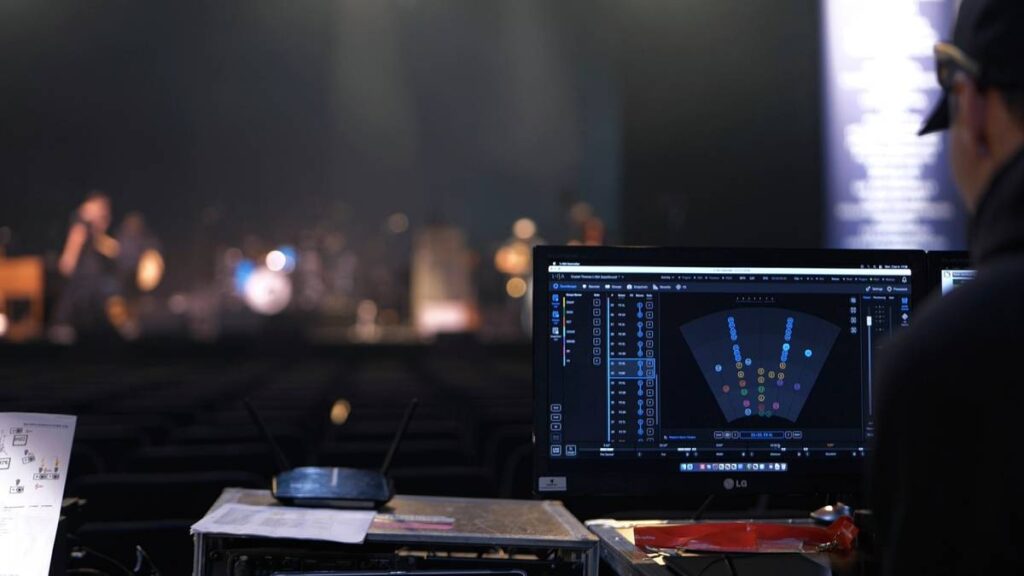
A seamless, immersive audio experience for all
While most audience members may not have identified the technology by name, they certainly felt its impact. L-ISA technology delivered consistent coverage and fidelity across the venue, ensuring an engaging and emotionally resonant listening experience in every seat. “The audience doesn’t need to understand how it works—they just know it sounds great,” says Vaillant. “But in reality, people sitting far left or right enjoyed the same clarity as those in the centre, which wouldn’t happen with a traditional stereo system.”
Following the success of this deployment, Scène de Nuit is already exploring further enhancements for future editions of the festival. “This project confirmed how perfectly L-ISA suits the sophisticated nature of the Jazzellerault lineup,” concludes Vaillant. “It elevated the live music experience without losing the intimacy that defines the festival”.
For more information on Jazzellerault Festival please visit: https://festival-jazzellerault.fr/
Press release assets are found by clicking here.
Subscribe to Our Newsletter
Get the lastest news and find out about listening events.